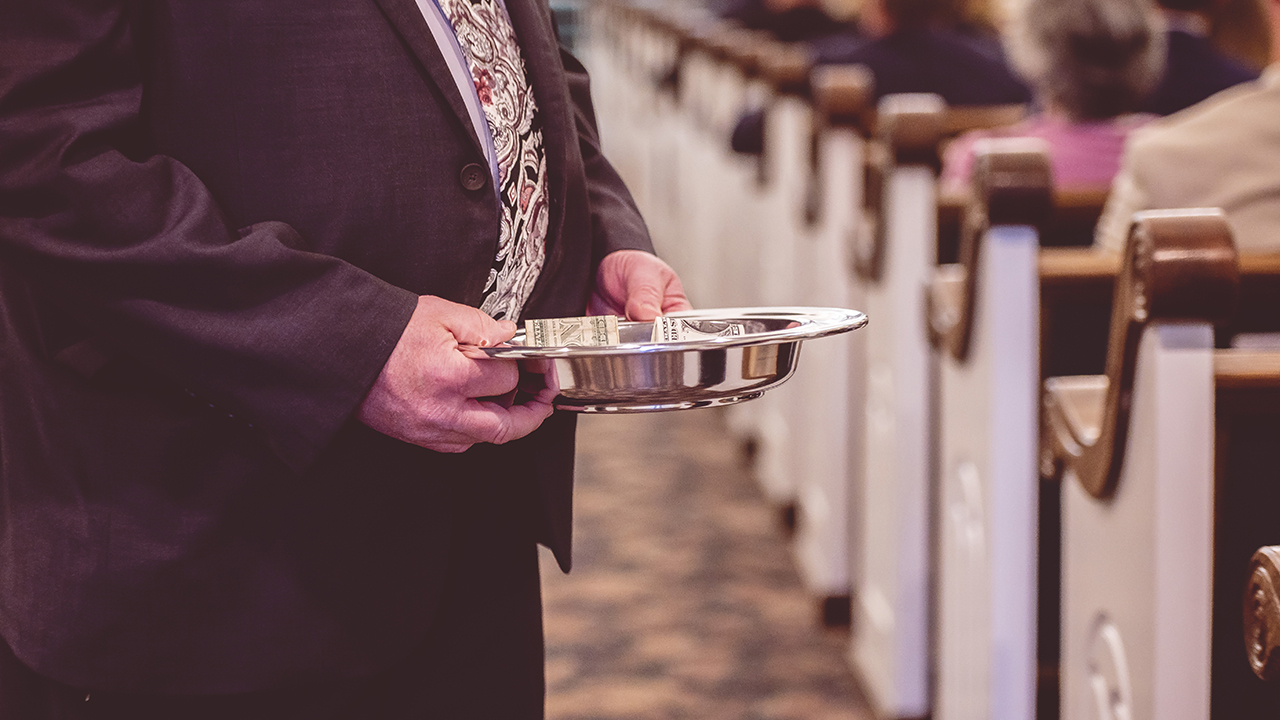Church Live Streaming: Setting Up and Essential Tips
The concept of church has always been centered around community, gathering, and shared worship. But in today’s digital age, worship is no longer confined to physical walls. Church live streaming has become a powerful tool to engage with congregants wherever they are, allowing churches to extend their reach, deepen connections, and provide access to those who cannot attend in person.
Whether your church is new to live streaming or looking to improve its current setup, this guide offers essential tips to help you establish a successful live streaming service. By embracing technology, your church can create meaningful worship experiences for both in-person and remote attendees.
Why Church Live Streaming Matters
Live streaming offers numerous benefits that go beyond simply broadcasting services. Here’s why live streaming is essential for modern ministries:
- Extended Reach: Live streaming allows your church to reach people who are unable to attend in person, such as members who are traveling, homebound, or living in different geographic areas.
- Increased Engagement: Viewers can actively participate in worship by watching live services, commenting, and engaging with your church community in real time.
- Outreach Opportunities: Churches can use live streaming as a form of outreach, sharing their message with a broader audience, including non-members or those exploring faith.
- Accessibility: Offering live streaming enables inclusivity, allowing people with disabilities or mobility challenges to participate fully in worship services.
With these benefits in mind, setting up a high-quality live stream becomes a crucial step in ensuring your church remains connected with its congregation.
Essential Equipment for Church Live Streaming
Setting up live streaming for your church doesn’t have to be expensive, but there are some essential pieces of equipment you’ll need to get started:
1. Camera
The quality of your video plays a significant role in how professional your live stream will appear. There are a range of cameras available, depending on your budget and desired quality.
- Basic Option: A smartphone or tablet can work well for small churches starting out. They offer high-resolution video and are easy to use.
- Intermediate Option: A DSLR camera or camcorder provides better video quality, optical zoom, and more manual controls.
- Advanced Option: PTZ (pan, tilt, zoom) cameras offer professional-quality live streaming with remote control capabilities for larger churches.
2. Tripod or Mount
A stable video feed is crucial for live streaming. Investing in a good tripod or camera mount ensures smooth, steady shots throughout the service.
- Standard Tripods: Affordable and reliable for stationary shots.
- Motorized Mounts: Ideal for panning and following movement during dynamic portions of the service, such as worship music or speakers moving on stage.
3. Audio Equipment
Good audio quality is just as important, if not more important, than video. A poor audio experience can drive viewers away from the stream.
- External Microphones: If you’re using a smartphone or DSLR, external mics can greatly improve sound quality.
- Lavalier Mics: Perfect for capturing speakers’ voices clearly.
- Shotgun Mics: Great for capturing audio from a distance, such as from the back of a church.
- Audio Mixers: Allows you to manage multiple audio inputs, such as microphones for the pastor, choir, or musicians.
4. Lighting
Proper lighting can make a huge difference in the quality of your live stream, especially if your church has dim lighting or services are held in the evening.
- Ring Lights: Affordable and effective for illuminating the speaker or pulpit area.
- Softbox Lights: Provide more even lighting across the entire stage or worship area.
5. Streaming Software or Platform
You’ll need software to manage your live stream and send it to your chosen platform (Facebook Live, YouTube, church website, etc.).
- OBS Studio (Open Broadcaster Software): A free, open-source platform that offers robust features for managing streams.
- Wirecast or vMix: Paid options that provide more advanced controls and features, such as switching between multiple camera feeds and adding overlays.
- Ecamm Live: A popular choice for Mac users with easy-to-use features and integration with social platforms.
6. Internet Connection
A stable and fast internet connection is key to maintaining a smooth live stream without interruptions or buffering.
- Recommended Speed: For HD quality streaming, a minimum upload speed of 5 Mbps is recommended.
- Wired Connection: Whenever possible, use a wired Ethernet connection instead of Wi-Fi for a more reliable and stable stream.
Setting Up Church Live Streaming: Step-by-Step Guide
Once you have the equipment ready, it’s time to set up your church live streaming. Here’s a step-by-step guide to ensure a smooth process:
1. Choose Your Platform
Decide which platform(s) you’ll use for live streaming. Popular options include:
- Facebook Live: Great for community interaction and reach, as it allows for comments and shares during the stream.
- YouTube Live: Ideal for longer services and easy embedding into your church’s website. It also archives videos for later viewing.
- Church Website: Some churches prefer streaming directly to their website using embedded players from platforms like Vimeo or ChurchStreaming.tv.
- Twitch: Originally a platform for gamers, it’s now being used by churches as an alternative live streaming service.
Consider streaming on multiple platforms at once to maximize your reach. Tools like Restream.io allow you to broadcast to several platforms simultaneously.
2. Set Up Your Camera and Audio
Position your camera in a location that provides the best view of the stage or pulpit. Ensure that your audio equipment is connected and tested for clear sound.
- Camera Angle: Position the camera at eye level, directly facing the speaker. If you have multiple cameras, position one to capture wide-angle shots of the worship service.
- Audio Levels: Check the audio levels during a rehearsal or sound check to ensure that voices, music, and ambient sounds are balanced.
3. Test Your Internet and Streaming Settings
Before going live, always run a speed test on your internet connection to ensure it meets the requirements for live streaming. Test your stream settings within your chosen platform to confirm everything is functioning properly.
- Test Runs: Do a test stream to ensure your video and audio sync correctly and that there are no technical issues.
- Backup Plan: Have a backup device or internet connection ready in case of any technical difficulties.
4. Engage Your Audience
Live streaming isn’t just about broadcasting; it’s about engaging viewers in real time. Here are a few ways to increase viewer participation:
- Welcome Messages: Greet your online audience at the start of the service and encourage them to participate through comments or live chats.
- Interactive Elements: Include interactive elements such as polls, prayer requests, or sermon notes that viewers can engage with during the service.
- Moderators: Appoint someone to monitor the live chat, respond to questions, and interact with viewers in real time.
5. Monitor and Adjust
During the stream, keep an eye on video quality, audio levels, and comments to ensure everything runs smoothly. After the service, review the recorded stream to assess any areas for improvement.
Best Practices for Successful Church Live Streaming
To ensure your church’s live streaming efforts are successful, consider these best practices:
1. Consistency
Regularly stream your services at the same time each week to create a reliable schedule for your online congregation. Consistency helps build trust and encourages more people to tune in each week.
2. Promote Your Live Stream
Promote your live streaming services across all your communication channels, including email newsletters, social media, and your church website.
- Social Media Announcements: Post regular updates and reminders about upcoming services on your church’s social media platforms.
- Event Pages: Create a Facebook event for special services, allowing members to RSVP and receive notifications.
3. Engage After the Stream
Once your service is over, don’t forget to engage with your online audience after the stream. Follow up with a thank-you message, post highlights from the service, and invite viewers to watch the recorded service if they missed the live stream.
- Follow-Up Emails: Send an email to attendees with a link to the recorded service and any additional resources.
- Post-Service Chats: Encourage viewers to share their thoughts, prayer requests, or insights from the service in the comments.
Overcoming Common Challenges in Church Live Streaming
Live streaming can present a few challenges, but with the right approach, these can be easily managed. Here are common issues and tips for overcoming them:
1. Technical Difficulties
Internet outages, audio sync issues, or camera malfunctions can disrupt your live stream. Always test equipment before the service and have backups in place.
2. Viewer Engagement
It can be challenging to engage an online audience, especially if the format is overly formal or passive. Incorporate live chat, interactive elements, and direct engagement with viewers to keep them involved.
3. Budget Constraints
Some churches may hesitate to invest in live streaming equipment due to cost concerns. Start small with affordable options like smartphones or consumer-grade cameras, then gradually upgrade as your streaming ministry grows.
Conclusion
Church live streaming is more than a tech trend; it’s a ministry tool that allows churches to connect with and engage their congregation in new and meaningful ways. By investing in the right equipment, creating a solid setup, and following best practices, your church can extend its reach beyond its walls and create an impactful online worship
editor's pick
News via Inbox
Stay ahead in the fast-evolving world of church technology with our Newsletter! By subscribing, you will gain access to a wealth of information and resources designed to keep you informed and empowered.






